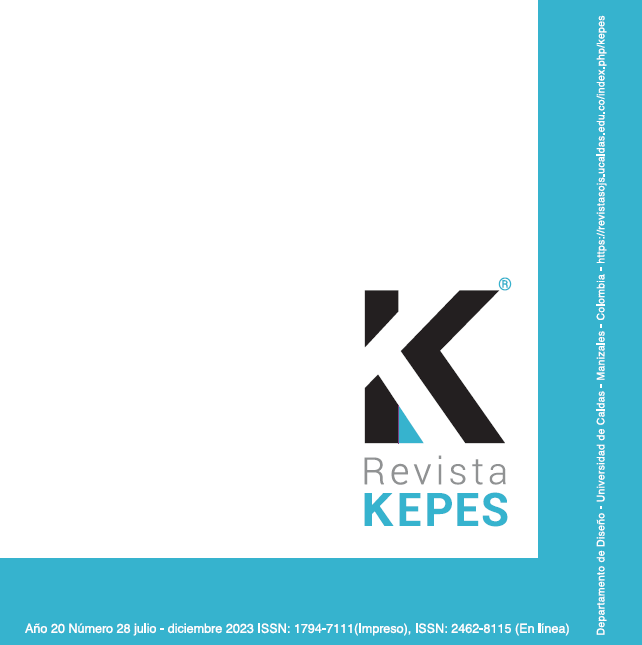Authors
Abstract
This article addresses an incompatibility that, although not apparent, is implicit in many areas of contemporary media production. Narrative, in its classic definition, is based on linearity, causality and determination. On the other hand, digital databases, which underpin the new media, transcend hierarchical or linear structures. From this last aspect derive properties such as automation, programming and, in general, interactivity. This implies that both narrative and digital media originate from different logics, which generates an interesting scenario: although there are intentions to interconnect them, the development in the fields of narratology and digital media starts from intrinsically opposite possibilities. Therefore, the objective of the research that underlies this article was to contribute to the theoretical and conceptual precision of the relationship between digital media and narrative, exploring their potentialities, limitations and points of convergence. The study was articulated through a qualitative methodology with a theoretical approach, starting with the identification of key concepts in the relationship between digital media and narrative. Subsequently, the positions of academics from both areas were intertwined and, finally, the concepts identified in a new media work with narrative character were analyzed, specifically the video game Death Stranding (2019). The main finding lay in the fact that the indispensable concepts for establishing theoretical bridges between narrative and digital media properties were those related to the experience involved in both fields. The concepts in question -such as immersion, agency, navigable space and embodiment, among others- come from areas as diverse as narratology, new media theory, post-phenomenology and video game studies, but find in the concept of experience a possible point of confluence.
Keywords
References
Barthes, R. (1966). Introducción al análisis estructural de los relatos. En B. Dorriots (Ed.), Revista Communications, 8.
Bayliss, P. (2007). Beings in the game-world: characters, avatars, and players. En Proceedings of The 4th Australasian conference on Interactive entertainment (pp. 1-6). RMIT University,Melbourne, Australia. https://dl.acm.org/doi/10.5555/1367956.1367960
Calleja, G. (2011). In-Game: From Immersion to Incorporation. The MIT Press.
Caracciolo, M. (2014). The Experientiality of Narrative: An Enactivist Approach. Gruyter.
Caracciolo, M. y Kukkonen, K. (2021). With Bodies: Narrative Theory and Embodied Cognition. Oxford University Press.
Cardoso, P., Oliveira, E., & Silva, I. (2019). Narrative and Gameplay: The Balanced and Imbalanced Relationship between Dramatic Tension and Gameplay Tension. En Proceedings of the 9th International Conference on Digital and Interactive Arts (ARTECH 2019) (pp. 1-8). Association for Computing Machinery. https://doi.org/10.1145/3359852.3359906
Casebier, A. (1991). Film and Phenomenology: Toward a Realist Theory of Cinematic Representation. Cambridge University Press.
Cohen, J. (2001). Defining Identification: A Theoretical Look at the Identification of Audiences With Media Characters. Mass Communication and Society, 3(4), 245-264.
Dourish, P. (2001). Where the Action is the Foundations of Embodied Interaction. The MIT Press.
Fludernik, M. (1996). Towards a ‘Natural’ Narratology. Routledge.
Fludernik, M. (2009). An introduction to Narratology. Routledge.
Grau, O. (2003). Virtual Art: From Illusion to Immersion. The MIT Press.
Herman, D. (1997). Scripts, Sequences, and Stories: Elements of a Postclassical Narratology. PMLA, 112(5), 1046-1059. https://doi.org/10.2307/463482
Herman, D. (1999). Narratologies: New Perspectives on Narrative Analysis. Ohio State UniversityPress.
Herman, D. (2009). Basic Elements of Narrative. Wiley-Blackwell.
Kukkonen, K. (2022). The Experience of Narrative: Aesthetics and Embodiment. En The Routledge Companion to Narrative Theory (pp. 397-408). Routledge.
Landow, G. (1991). Hypermedia and literary studies. MIT Press.
Machado, A. (2009). El Sujeto en la Pantalla: La aventura del espectador, del deseo a la acción. Gedisa.
Manovich, L. (2006). El lenguaje de los nuevos medios de comunicación. Ediciones Paidós.
Merleau-Ponty, M. (1993). Fenomenología de la percepción. Planeta Agostini.
Moulthrop, S. (1994). Hypertext and the Dreams of a New Culture. Johns Hopkins University Press.
Murray, J. (1997). Hamlet en la Holocubierta: El futuro de la narrativa en el ciberespacio. Ediciones Paidós.
Paez, D. (23 de agosto de 2020). Coined: How Gaming Turned a Hindu Concept Into the Internet’s Most Common Feature. Inverse. https://www.inverse.com/gaming/avatar-meaning-originsvideo-games
Ready, J. L. (2023). Immersion, Identification, and the Iliad. Oxford University Press.
Reyes, J. (9 de diciembre de 2021). Sony Now Owns Patent For Death Stranding’s PathBuilding Feature. https://www.gamespot.com/articles/sony-death-stranding-patentapproved/1100-6498812/
Ryan, M.-L. (2004). La narración como realidad virtual: La inmersión y la interactividad en la literatura y en los medios electrónicos. Ediciones Paidós.
Ryan, M.-L. (2006). Avatars of Story. University of Minnesota Press.
Ryan, M.-L. (2007). Toward a definition of narrative. En D. Herman (Ed.), The Cambridge Companion to Narrative (pp. 22-36). Cambridge University Press.
Ryan, M.-L. (2018). Narrative mapping as cognitive activity and as active participation in storyworlds. Frontiers of Narrative Studies, 4(2), 232-247.
Sobchack, V. (1991). The Address of the Eye: A Phenomenology of Film Experience. Princeton University Press.
Sobchack, V. (2004). Carnal Thoughts: Embodiment and Moving Image Culture. University of California.
Stang, S. (2017). Player Agency in Telltale Games’ Transmedia and Cross-Genre Adaptations. Cinephile, 11(3), 19-24. http://cinephile.ca/wp-content/uploads/Cinephile-11.3-Final1.pdf
Stang, S. (2019). “This Action Will Have Consequences”: Interactivity and Player Agency. Game Studies, 19(1). http://gamestudies.org/1901/articles/stang
Szolin, K., Kuss, D. J., Nuyens, F. M. y Griffiths, M. D. (2023). “I am the character, the character is me”: A thematic analysis of the user-avatar relationship in video games. Computers in Human Behavior, 143, 107694.
Wolf, M. (2010). Theorizing Navigable Space in Video Games. En Logic and Structure of the Computer Game (pp. 36-62). Potsdam University Press

 PDF (Español)
PDF (Español)
 FLIP
FLIP






















